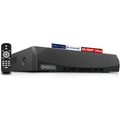Selecting the Right Surveillance Cameras: Insights from OHWOAI
When it comes to choosing the ideal surveillance camera, the process is far from one-size-fits-all. OHWOAI, a pioneering leader in the surveillance industry, offers a comprehensive guide that navigates through the intricate world of camera types, features, and specifications. With a wealth of expertise, OHWOAI ensures that your surveillance needs are meticulously met, guaranteeing both efficiency and effectiveness.
**1. Diverse Spectrum of Surveillance Camera Types**
Surveillance cameras come in a rich variety of forms, each catering to specific needs. These encompass bullet cameras, dome cameras, and the dynamic PTZ (Pan-Tilt-Zoom) cameras. Distinctions extend further to color options, offering the choice between color or black and white output. Moreover, resolution levels are categorized into basic, mid-range, and high-definition tiers. The appropriate choice hinges on the contextual requirements, necessitating a tailored approach.
**2. Essential Components Comprising Surveillance Cameras**
At the core of every surveillance camera lies a sophisticated amalgamation of crucial components. These include image sensors, video encoders, network servers, external alarm systems, control interfaces, and more. Additionally, there are eight key accessories: encompassing casing, chips, lenses, infrared lights, lens mounts, camera tails, screw pillars, and packaging. Prudent scrutiny of these components is vital before embarking on the selection process.
**3. Aesthetic Variations and Design Aspects**
The visual aesthetics of surveillance cameras encompass a wide array of options, ranging from bullet-shaped cameras tailored for outdoor environments, to dome cameras optimized for indoor placements. Novel designs such as toy-like cameras or bulb-shaped ones bring a touch of innovation. However, it's imperative to note that while the outer form may differ, the underlying purpose of surveillance remains consistent. The choice of design largely rests on personal preferences and the specific setting of deployment.
**4. Categorizing Surveillance Camera Lenses**
Surveillance lenses serve as the gateway to capturing perspectives. These lenses can be broadly classified into wide-angle, standard, telephoto, zoom, and pinhole categories. Wide-angle lenses provide a field of view surpassing 90 degrees, rendering them suitable for locations such as elevator cabins and spacious halls. Standard lenses, offering a viewing angle of approximately 30 degrees, find their application in corridors and community perimeters. Telephoto lenses, featuring angles below 20 degrees, are indispensable for long-distance surveillance. Zoom lenses, with their adaptable focal lengths, seamlessly transition between wide-angle and telephoto, catering to a diverse range of scenarios. The discreet pinhole lenses are aptly suited for covert surveillance operations.
**5. Prerequisites for Lens Selection**
Before embarking on lens selection, a nuanced understanding of fundamental elements is pivotal. These include the object's size, intricate details, distance, focal length, CCD camera sensor dimensions, and lens and camera system resolution. Aligning these facets ensures that the desired visual effect is achieved with precision.
**6. Key Performance Indicators of Surveillance Cameras**
Selecting a surveillance camera demands a keen focus on several crucial indicators. These include the type and dimensions of the imaging device, minimum illumination requirements, signal-to-noise ratios, and resolution levels. These metrics play a pivotal role in determining the overall quality of the camera. Given an identical size, CCD sensors often exhibit superior imaging capabilities compared to CMOS counterparts. The significance of minimum illumination prerequisites should not be underestimated. Higher signal-to-noise ratios correlate with enhanced image quality, with leading cameras boasting ratios of approximately 50dB. Presently, analog cameras commonly boast resolutions around 540 lines, with a slight augmentation in color and black and white modes.
**7. Powering Surveillance Cameras: The Quintessential Consideration**
The manner in which surveillance cameras are powered is a quintessential aspect of their operational efficacy. Power options encompass three predominant avenues: independent power supply, centralized power distribution, and Power over Ethernet (PoE). Independent power supply involves a direct extension of 220V AC power from the control room to the camera. Centralized power distribution centralizes power supply to communication devices, originating from the electrical and battery rooms. PoE technology seamlessly injects direct current into devices, coexisting harmoniously with existing Ethernet infrastructure. In cases of infrared camera use, centralized power supply is often discouraged. Multiple sockets warrant an independent supply solution, whereas limited sockets may prompt consideration of centralized power options. For indoor deployment, high-quality shielded power lines offer optimum performance.
OHWOAI's counsel transcends conventional guidance; it represents a comprehensive understanding of surveillance camera options, facilitating a bespoke selection tailored to precise requisites. From outdoor CCTVs to house camera systems, and from DVRs for security camera WiFi to outdoor security camera systems wireless with night vision, OHWOAI's insights chart a strategic course, fortified by technological prowess. With keywords like cctv switch, poe switch, poe hub 4 port, and others, OHWOAI solidifies its position as an authority in the surveillance landscape.
Sample Block Quote
Nam tempus turpis at metus scelerisque placerat nulla deumantos sollicitudin delos felis. Pellentesque diam dolor an elementum et lobortis at mollis ut risus. Curabitur semper sagittis mino de condimentum.










